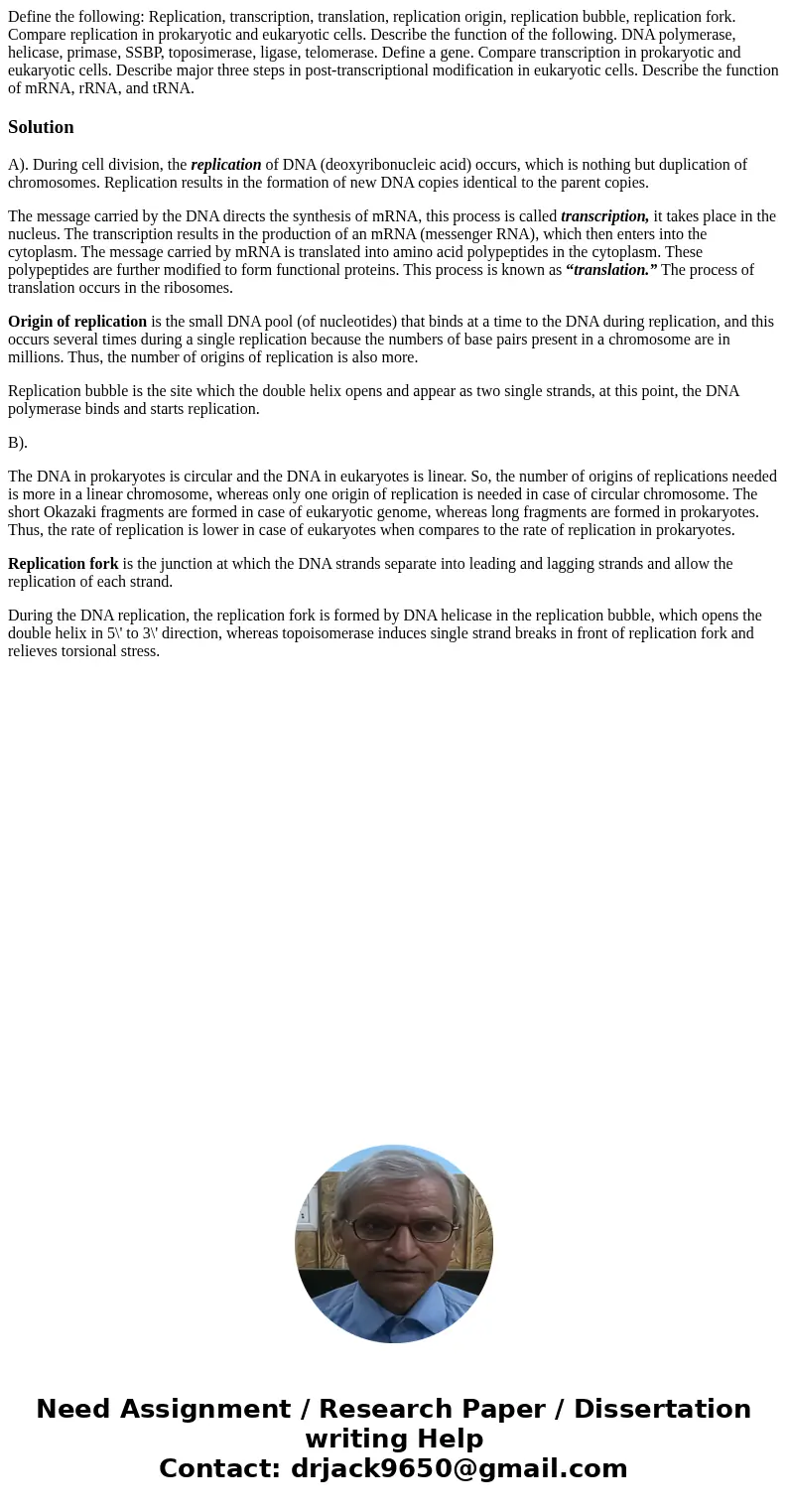Define the following Replication transcription translation r
Solution
A). During cell division, the replication of DNA (deoxyribonucleic acid) occurs, which is nothing but duplication of chromosomes. Replication results in the formation of new DNA copies identical to the parent copies.
The message carried by the DNA directs the synthesis of mRNA, this process is called transcription, it takes place in the nucleus. The transcription results in the production of an mRNA (messenger RNA), which then enters into the cytoplasm. The message carried by mRNA is translated into amino acid polypeptides in the cytoplasm. These polypeptides are further modified to form functional proteins. This process is known as “translation.” The process of translation occurs in the ribosomes.
Origin of replication is the small DNA pool (of nucleotides) that binds at a time to the DNA during replication, and this occurs several times during a single replication because the numbers of base pairs present in a chromosome are in millions. Thus, the number of origins of replication is also more.
Replication bubble is the site which the double helix opens and appear as two single strands, at this point, the DNA polymerase binds and starts replication.
B).
The DNA in prokaryotes is circular and the DNA in eukaryotes is linear. So, the number of origins of replications needed is more in a linear chromosome, whereas only one origin of replication is needed in case of circular chromosome. The short Okazaki fragments are formed in case of eukaryotic genome, whereas long fragments are formed in prokaryotes. Thus, the rate of replication is lower in case of eukaryotes when compares to the rate of replication in prokaryotes.
Replication fork is the junction at which the DNA strands separate into leading and lagging strands and allow the replication of each strand.
During the DNA replication, the replication fork is formed by DNA helicase in the replication bubble, which opens the double helix in 5\' to 3\' direction, whereas topoisomerase induces single strand breaks in front of replication fork and relieves torsional stress.

 Homework Sourse
Homework Sourse